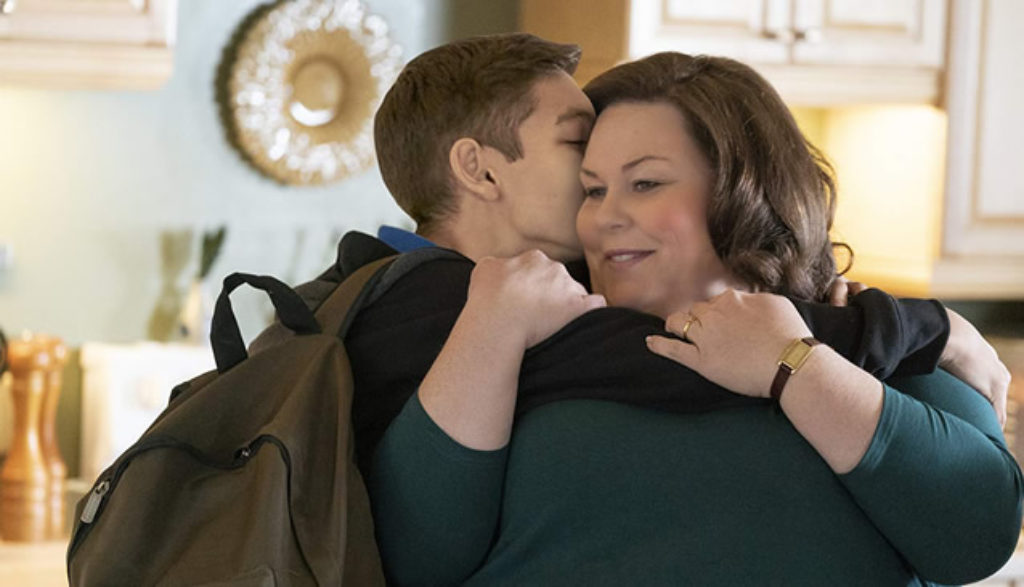
On Jan. 19th, 2015, 14-year-old John Smith and two friends ran out onto a frozen Missouri lake to play. Just teen guys having fun, not realizing the risk they were taking.
But their amusement is cut short when the ice cracks and the boys slip into the frigid water below. As each boy frantically struggles to get out and climb ashore, John gets kicked in the face and knocked out, sending him even deeper into the dark waters … for more than 15 minutes.
A man sees the boys fighting for their lives and calls the police. But it’s too late for John. No matter how badly his parents want him to live, no matter how hard the medical staff tries to revive him, John is gone.
The boy’s fragile body rests on an ER gurney, lifeless and cold. He’s been dead for more than an hour. But his mother, Joyce Smith, can’t bear to let him go. This was her adopted son from Guatemala. The same baby whose feet she tickled, whose hands she held, whose tears she wiped away. This was her boy who, despite feeling the effects of abandonment, she believed was called to great things. His life was meant to be lived for a divine purpose.
Joyce is not ready to say goodbye. She cries out, “Holy God, please send your Holy Spirit to save my son.”
Moments later, John’s heart begins beating again.
He has a pulse.
The doctors can barely believe it. John couldn’t come back from the dead. And even if he did, his brain would have zero function.
Unless, of course, miracles still happen …
Before the accident, John wrestles with rejection and his sense of identity as a Guatemalan child raised by adoptive American parents. As a young boy, John often cried as he wondered why his biological parents would give him up for adoption. And although he struggles with his sense of purpose and self-worth, his mother, Joyce, constantly reminds him that he is loved and that he has a purpose. His father, Brian, is also loving, caring and protective. (Note: The realistic depiction of John’s identity struggles could potentially be triggers for foster or adoptive children with similar backgrounds.)
When the doctors and staff members sincerely try to help the Smiths brace for the worst, Joyce stands her ground and has faith that her son will be healed. She tells the medical staff (and friends) that they’re not allowed to be negative about John, but must instead speak life over him.
Pastor Jason Noble, a recent transplant to the Smiths’ Missouri church from California, initially has a difficult relationship with Joyce. But as the story progresses, Jason is a stalwart supporter of the family, constantly present at the hospital and at John’s bedside. Eventually, Joyce sees past some of her superficial judgments about him to recognize and embrace the truly faithful family friend that Jason proves himself to be.
As John’s slow recovery unfolds, Joyce and her husband differ in their response to the possibility that he may never actually regain full consciousness or really be himself again. Joyce doggedly clings to her faith, while Brian tries to be realistic and faces what will likely be a difficult reality. That creates significant conflict between the two of them, tension the movie realistically depicts as they struggle to communicate, trust and offer forgiveness to each other throughout the days that follow John’s return to life.
As John lies on the hospital bed, without a pulse, Joyce begins to pray over him, asking the Holy Spirit to come and bring her boy to life. Moments later, John begins to breathe, seemingly as a direct result of Joyce’s prayer and faith.
But in some ways, the real battle for John is only just beginning. He’s unconscious and has multiple health issues for days after the accident. And those who wait and pray for the teen to recover fully are often filled with doubt, fear and anxiety about the unknown, creating stress between Joyce and nearly everyone else in her life.
And while Joyce obviously has tenacious faith, her own personal breakthrough involves trusting God fully with John’s fate, even if that means he never truly wakes up. Once she relinquishes her desire to be in control—a character trait that’s often cloaked in spiritual language—Joyce is able to be lovingly present with her son without getting angry at others who may not share her faith.
One of the rescue workers who pulls John out of the water is an atheist. He wrestles with his own belief in God, after admitting to hearing God’s voice as he was searching for John’s drowned body.
People hold a prayerful vigil outside of the hospital, singing the worship song “Oceans” over John as he fights for his life. Other worship songs are sung about grace, love, faithfulness and God’s power. Many people cry out to God for mercy, understanding and forgiveness. The film also ponders the important question, “Why does God save some and not others?” To the film’s credit, it resists offering an easy answer even as it tells John’s miracle-filled story.
Forgiveness and repentance play key roles in this film. Joyce, in particular, makes a few selfish decisions in her desire to protect her son. But eventually, she apologizes to those she has hurt, and other characters reconcile relationships as well.
Many church members, including Joyce herself, are not comfortable with the new pastor and his modern approach to church and worship. A few of the congregants are visibly annoyed and refuse to participate in the worship service because of their own judgmental attitudes and worship preferences. (His inclusion of a rapper in a church worship service, for example, isn’t met with wholehearted approval; and a sermon illustration involving the reality dating show The Bachelor initially makes people uneasy as well.)
Pastor Jason tells his children that a shepherd’s job is to take care of his sheep (referencing those within his congregation). Men and women wear crosses. Families pray together. John attends a private Christian school.
John and his friends have crushes on a few girls (whom they text). They also brag to fellow classmates about having girls over (which, in fact, they don’t). Middle school boys joke about men wearing tights in a play.
John and his two friends wander out onto a frozen lake where, eventually, the ice gives way and each of the boys plummets into the freezing water. As they struggle to get out, John is accidentally kicked in the head and knocked out, sending him deep below the water’s surface. Two of the boys are pulled out of the water, clearly dealing with shock and hypothermia. John is found some time later, without a pulse and with a bloody gash on his arm, apparently from a jagged shard of ice.
Doctors inject John’s lifeless body with various drugs to revive him, and they repeatedly use powerful defibrillating shocks in their futile attempt to revive him. We also hear doctors talk about various medical procedures. Similarly, a doctor graphically discusses John’s prognosis. At one point, John’s entire body begins convulsing. A woman pricks her finger during a blood sugar test, drawing blood. Later, she falls into a diabetic coma.
Two boys get into a fight and they push and insult one another. A teacher tells her student that her husband died in his sleep from an aneurysm.
God’s name is misused three times, and “h—” is heard twice. We hear the unfinished phrase “bulls—.” A young boy calls a fellow classmate a “wuss” and tells him to “shut it.” A parent says someone “ticked me off.” A man says, “I’m nuts.” A fellow classmate hurls a derogatory racial slur at John.
John listens to Bruno Mars’ “Uptown Funk,” which includes lyrics that mention drinking alcohol. Men and women are shown, briefly, drinking beer and wine in a bar (before they stop to pray for John).
Doubt is the number one enemy in this film. Family, friends and staff all doubt that John will recover.
Pastor Jason and Joyce Smith have a tense relationship throughout much of the film. Jason can be rude and inconsiderate, while Joyce is often stubborn, abrasive and judgmental. Joyce also yells at doctors and staff (although sometimes, her passion is warranted), and she can be controlling and brusque with her family and friends as well. She’s especially critical of her husband’s initially deeply passive response to John’s accident.
John occasionally ignores his parents and makes them feel badly about themselves. He also disrespectfully calls them by their first names. John doesn’t do a homework assignment and shrugs it off as if he doesn’t care. Finally, he wants to be the star on the basketball court and often ignores teammates.
John is taunted by a few kids at school for surviving when their own loved ones are suffering. A woman admits, regretfully, that she gave her son up for adoption when she was 18 years old.
Based on Joyce Smith’s book The Impossible, Breakthrough dramatizes the real-life story of 14-year-old John Smith, told from the perspective of his mother, Joyce Smith.
This story is so many things. It’s heartbreaking, as John struggles with his identity and self-worth. It’s honest, as the Smith family, and many others, wrestle with their faith in God. And, ultimately, it’s powerful, offering a testimony to God’s goodness and mercy.
A handful of colorful words pepper the script. And at times, Joyce Smith’s controlling behavior can be painful to witness. But those small caveats aside, this powerful and true story shows us that miracles still happen. We’re reminded that faith, even when it’s the size of a mustard seed, can produce seemingly impossible outcomes—the kind of outcomes that can break through the doubting walls around our hearts.
Breakthrough highlights the Smith family’s remarkable spiritual journey. Yet, we all have a story to tell. How can we be a witness for Christ in our sphere of influence? For helpful ideas about living out your Christian faith for others to see, consider the following:
Being Faithful to Jesus in the World
Empowering Your Children to be Bold in Their Faith
How do I Respond to Bible Critics?
Pass It On: Building a Legacy of Faith for Your Children through Practical and Memorial Experiences


Kristin Smith joined the Plugged In team in 2017. Formerly a Spanish and English teacher, Kristin loves reading literature and eating authentic Mexican tacos. She and her husband, Eddy, love raising their children Judah and Selah. Kristin also has a deep affection for coffee, music, her dog (Cali) and cat (Aslan).